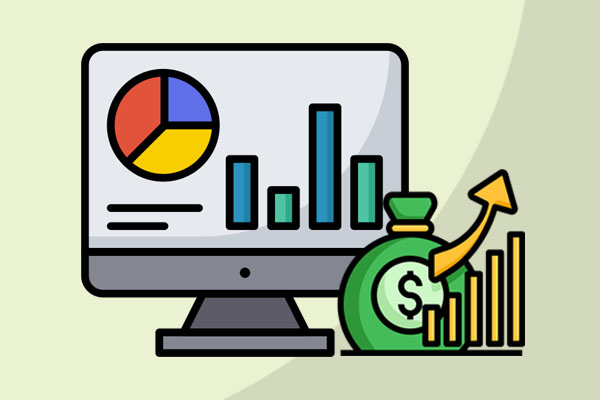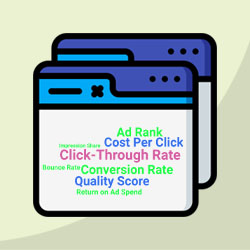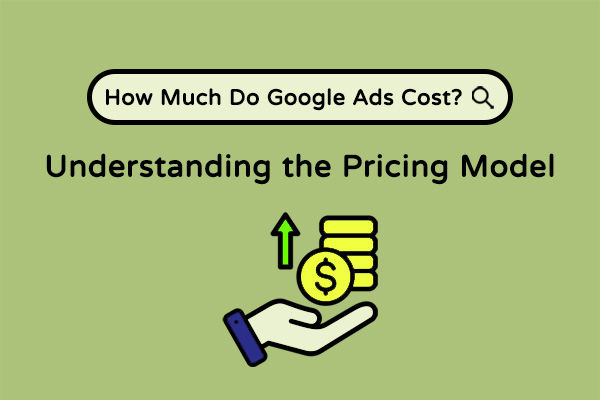How Effective Are Google Ads? Analyzing ROI and Performance Metrics

Businesses invest in advertising to increase visibility, attract customers, and boost revenue. Google Ads, formerly known as Google AdWords, offers a way to place targeted ads in front of the right audience. But how effective are these ads in generating a positive return on investment (ROI)? Understanding key performance indicators can help businesses determine whether Google Ads is the right strategy for them.
The Importance of ROI in Google Ads
ROI is one of the most important factors in measuring the success of a Google Ads campaign. It reflects how much revenue a business earns for every dollar spent on advertising. A positive ROI means the campaign is profitable, while a negative ROI signals the need for adjustments.
Businesses using Google Ads often see an average of $2 in revenue for every $1 spent. However, this varies depending on industry, competition, ad quality, and targeting strategy. Monitoring ROI allows advertisers to refine their approach and improve their returns.
Key Google Ads Performance Metrics

To evaluate the effectiveness of a campaign, advertisers must track specific Google Ads performance metrics:
- Click-Through Rate (CTR): The percentage of people who click on an ad after seeing it. A higher CTR indicates compelling ad copy and relevant targeting.
- Conversion Rate: Measures how many users take the desired action after clicking an ad, such as making a purchase or signing up.
- Cost Per Click (CPC): The amount spent each time someone clicks on an ad. Lower CPCs help maintain a higher ROI.
- Quality Score: Google’s ranking of an ad’s relevance based on expected CTR, landing page experience, and keyword relevance. A higher score can reduce costs and improve placements.
- Ad Rank: Determines where an ad appears on the search results page, influenced by Quality Score and the bid amount.
- Return on Ad Spend (ROAS): This metric compares revenue generated from ads to the cost of running them. A high ROAS indicates that campaigns are driving substantial revenue relative to their expenses.
- Impression Share: The percentage of times your ad is shown compared to the total number of times it could appear. A higher impression share means better ad visibility.
- Bounce Rate: Measures how often users leave your site without taking action after clicking an ad. A high bounce rate may indicate that landing pages need improvement.
How to Improve Google Ads ROI
1. Target the Right Audience
Google Ads provides detailed targeting options, including demographics, locations, and behaviors. Using these effectively ensures ads reach the most relevant users, increasing engagement and conversions. Businesses should refine their targeting based on customer data and past campaign performance.2. Optimize Ad Copy
Ad headlines and descriptions should be engaging, clear, and persuasive. Highlighting unique selling points and including strong calls to action (CTAs) can improve performance. Testing multiple variations of ad copy can help identify what resonates most with the audience.3. Refine Keyword Strategy
Using Google AdWords effectively means choosing keywords that align with user intent. Negative keywords should also be added to prevent ads from showing for irrelevant searches. Conducting ongoing keyword research helps improve targeting and reduces wasted ad spend.4. Improve Landing Pages
A well-designed landing page can significantly impact conversions. Pages should load quickly, be mobile-friendly, and align with ad messaging to create a seamless experience. Clear navigation, engaging visuals, and strong CTAs help drive more conversions.5. Utilize A/B Testing
Testing different ad variations helps identify what works best. Adjusting elements such as headlines, CTAs, and images based on performance data can lead to better results. Businesses should also experiment with different bidding strategies and ad placements to determine the most effective approach.6. Leverage Retargeting Campaigns
Many users do not convert immediately after clicking an ad. Retargeting campaigns allow businesses to re-engage visitors who showed interest but did not complete a purchase. Displaying targeted ads across various platforms can remind users to return and take action.7. Monitor Competitor Strategies
Keeping an eye on competitors’ ad strategies can provide valuable insights. Identifying gaps and opportunities in the market can help businesses adjust their approach to stay competitive.8. Automate Bidding Strategies
Google Ads offers automated bidding options that help advertisers optimize their campaigns in real time. Machine learning analyzes past performance and user behavior to adjust bids for better results.9. Optimize for Mobile Users
More than half of internet traffic comes from mobile devices. Ensuring that ads and landing pages are mobile-friendly can lead to higher conversions and better user engagement.10. Use Smart Campaigns
For businesses with limited experience, Smart Campaigns can automate many aspects of Google Ads management. These campaigns analyze performance data and adjust strategies to maximize ROI.
The Role of a Google Ads Agency
Managing Google Ads campaigns requires expertise in strategy, optimization, and analysis. A Google Ads agency can help businesses maximize their ad spend by providing insights, managing bids, and implementing best practices. Agencies also offer ongoing adjustments based on performance data to ensure continued success. A skilled agency will regularly analyze data, refine targeting, and implement advanced strategies to drive better results.
Common Challenges in Google Ads Campaigns
Despite its effectiveness, Google Ads comes with challenges that advertisers must overcome:
- High Competition: Popular keywords often have high bidding costs, making it harder for smaller businesses to compete.
- Click Fraud: Some industries face fraudulent clicks from competitors or bots, which can waste ad budgets.
- Ad Fatigue: Running the same ads for an extended period can reduce engagement. Refreshing creatives and testing new approaches can help maintain performance.
- Algorithm Updates: Google frequently updates its advertising algorithms, requiring advertisers to stay informed and adapt their strategies.
- Budget Constraints: Managing ad spend effectively is crucial. Small businesses need to allocate budgets wisely to compete with larger advertisers.
Is Google Ads Worth the Investment?
For businesses looking to increase visibility and drive sales, Google Ads can be highly effective. The ability to target users based on search intent makes it a powerful tool for acquiring customers. However, success depends on proper strategy, budget allocation, and campaign optimization. Monitoring ROI and adjusting campaigns accordingly will determine whether Google Ads delivers long-term value.
At Full Speed Advertising, we specialize in creating high-performing Google PPC AdWords campaigns that drive measurable results. Our team of experts provides data-driven strategies to help businesses achieve better ROI. Contact us today to optimize your advertising strategy and make the most of your ad budget.


